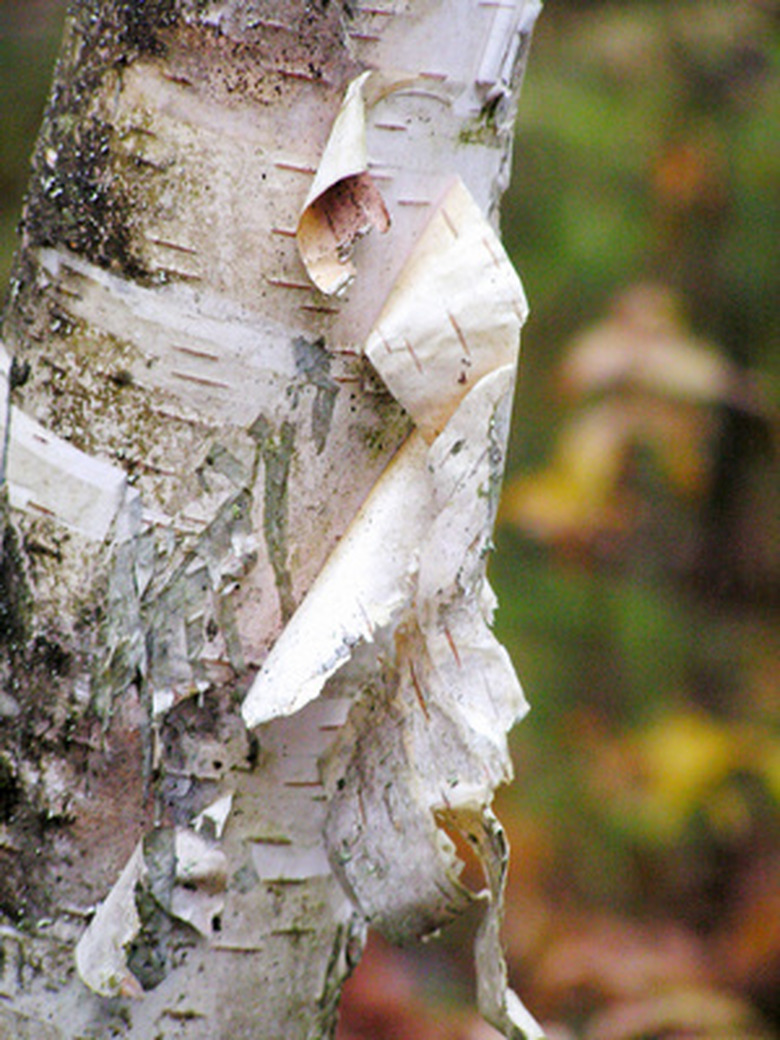Differences Between Birch Trees & Aspens
Both birch and aspen trees have ornamental value in garden settings, and you can't deny the beauty of a birch tree's flaking bark or the glorious golden color of an aspen in autumn. The aspen tree is faster growing than a birch, but both species are used as shade or accent trees, and sometimes windbreaks in colder climate regions.
Taxonomy
Both of these trees are angiosperms, or flowering plants. However, they are classified into different plant families. Birch trees belong to the birch family, Betulaceae, whereas aspen trees are a member of the willow family, Salicaceae. Birch trees are then further grouped into their own genus, Betula. Aspen trees belong to the genus Populus, which makes them close kin to cottonwood and poplar trees.
- Both birch and aspen trees have ornamental value in garden settings, and you can't deny the beauty of a birch tree's flaking bark or the glorious golden color of an aspen in autumn.
- Birch trees belong to the birch family, Betulaceae, whereas aspen trees are a member of the willow family, Salicaceae.
Leaves
Birch leaves are generally medium to deep green and oval in shape with a tapering tip. The leaf margins, or edges are toothed. On the tree branch, the leaves are arranged alternately. Aspen leaves are glossy medium to dark green and are broadly oval with large, irregular teeth on the leaf margins, and lack any long, tapering tip as seen with birch leaves. Aspen leaves are arranged alternately on the branches. Both birch and aspen trees' fall foliage color is yellow.
Flowers
Both birch and aspen trees form a cluster of flowers called an inflorescence. The shape of the inflorescence is a catkin, sometimes called an ament. The catkin is a drooping cluster of tiny flowers that look like long strings or fingers and are usually wind-pollinated. Birch tree catkins are slender and appear in spring before leaves emerge. They are either male or female in gender, occurring on different branches on the same tree. Aspen trees' catkins, a bit more robust in shape, also appear in spring before leaves appear, but male and female catkins appear on separate individual trees.
- Birch leaves are generally medium to deep green and oval in shape with a tapering tip.
- The catkin is a drooping cluster of tiny flowers that look like long strings or fingers and are usually wind-pollinated.
Seeds
Only female catkins produce seeds in birches and aspens. In birch trees, the seeds that develop after flowering are tiny and winged and drop a short distance from the parent plant. Aspen seeds have white, cottony fibers that allow for wind dispersal over a great distance. Sometimes released aspen seeds are called "falling cotton."
References
- DiscoverLife: Betula
- DiscoverLife: Populus
- "A-Z Encyclopedia of Garden Plants"; Christopher Brickell and H. Marc Cathey; 2004
